TVD Second Patriotic. 1915 year. Part of 2
4 schema. Fights under Prasnyshem 12 – 15 February 1915 g. On the map of the Gregorian calendar. Reichsarchiv. Der Weltkrieg 1914 – 1918. B. 7. Berlin, 1931
The operation was carried out to stabilize the strategic situation in the north-west direction. The strategic importance of the Second Prasnysh operation was extremely great. The goal was achieved - the Russians won a decisive victory over a powerful adversary. It was possible to largely eliminate the consequences of the unsuccessful Second August Operation.
In March, the army group M.-K.-V. von Galvitsa, supported by units of the German 10 Army, repelled a Russian counteroffensive. The Germans had to stop the attack on Osovets and the Beaver line. But stabilization was achieved only within a month - as early as April, the German invasion of the Baltic States began.
The result of the Second Prasnysh is indicative of the trophies of the winners (captured before 14000 people - this “record” the French would “beat” in Champagne in just over six months, 58 guns, 100 machine guns and 2 mortars). 2 corps of Germans (1-th reserve and Tsastrova) were defeated and largely destroyed - one in the city of Prasnysh, the other, covering the retreat of the remnants of the German troops. The total losses of the Russian 1 and 12 armies are 40000 people, the German 8 and 12 armies are 60000 people (and the Germans admit the loss only in the city of Prasnysh 13000 fighters [13]).
In order to capture the Russian troops in Poland, the enemy began the implementation of Summer Strategic Cannes.
In the north, the army group Halwitz and the 8 army were supposed to hit the Neman (the group sought to reach the area west of Osovets through Pultusk and Prasnysh), and in the south - army group A. von Mackensen from the German 11 and Bug and Austro-Hungarian 4 armies on Vladimir-Volynsky (the group was advancing between the Vistula and Western Bug rivers across the Hill - Lublin in the direction of Brest-Litovsk). Thus, a powerful strike was planned under the base of the Polish ledge with the aim of destroying the Russian troops there. This grand maneuver was supposed to lead to the encirclement of several Russian armies at once.
And in this situation, the Polish theater of technology again played its special role - and above all its flanks. At the first stage of the "Summer Strategic Cannes" on the northern flank of the "Polish ledge" took place the Third Prasnyshskaya [14], and on the southern flank - Krasnostavskaya and Hrubieshovskaya operations.
5 schema. Deployment of Russian and German troops before the start of the Third Prasnysh operation. Korolkov G. K. The Prasnysh Battle. July 1915 M. - L., 1928
Despite the fact that in the Third Prasnysh operation on the direction of the main attack, the enemy had three and a half times more infantry and seven times more guns (German 100000 with 864 guns against 2 and 11 Siberian rifle divisions - 27000 Russians with 120 guns), the enemy group offensive was foiled. Due to the stubborn resistance of the Russian troops for almost a week of fighting, the Germans were able to advance only 30-35 km, achieving tactical success at the cost of heavy losses in people and material resources. Russian troops were not defeated, but only shifted from their positions and pushed to the p. Narew - they consolidated the front, creating a dense defense on this natural frontier. Operatively Third Prasnysh - the success of the Germans, but strategically he contributed to the Russian plan to competently evacuate wealth and withdraw troops from Central Poland. Thus, the strategic success remained on the Russian side - they kept on the line r. Narev. The third Prasnysh put an end to the development of the northern claws of Summer Strategic Cannes.
The losses of the Russians in this operation are up to 40000 people (which is primarily due to the overwhelming superiority of the enemy), including those killed near 12%, wounded over 37% and about 50% missing (including prisoners around 40 officers and more 16000 privates - many were captured, lagging behind their own during the departure). Lost 12 guns and 48 machine guns. Losses of the Germans reached 25% of the group Glavitsa - that is, more than 40000 people [15].
In the course of Krasnostava [16] and Hrubieshovskaya operations [17] the enemy failed to achieve a tactical breakthrough of the front of the Russian troops.
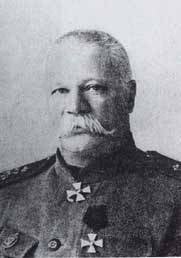
Commander 3 A General of Infantry L. V. (P) Lesh
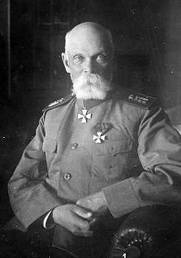
Commander 13 A General of Infantry V.N. Gorbatovsky
The southern armies of the North-Western Front slowly retreated (for example, during the 7-day Hrubieszow operation, the Bug army advanced only 16 km, the result of the Austro-Hungarian 1 army was even weaker), inflicting serious blows on the enemy, reducing his offensive rates. The Russian Imperial Guard showed its combat power and tactical power in these battles. But due to the unfavorable situation on the right flank of the 3 Army, the tactical success of the Russian Guards Corps was not transformed into operational.
The German guard in this operation suffered major losses. Thus, from June to mid-August 1915, according to German data, the 1 Guards Infantry Regiment of the 1 Guards Division lost 53 officer and 3005 lower ranks, and the 3 Guards Infantry Regiment - 17 officers and 2116 lower officers . e. parts actually changed their combat strength. The Austro-Hungarian units were battered before the start of the battle. Thus, according to Austrian data, the 6 Army Corps only in 3 battles in July 1915 lost 4,7 thousand people (including 1,2 thousand killed) [18]. The offensive head of Army Group A. Mackensen gradually exhaled.
During the Hrubieszow operation, Russian troops captured up to 5000 prisoners, several guns, at least 15 machine guns. Yu. N. Danilov described these fights as protracted and very stubborn, often reaching hand-to-hand combat and costly for both sides. The Russians gradually retreated to the south section of the Advanced Theater - to the north, to Lublin and Hill, continuing to challenge every step of the enemy [19].
At the second stage of the “Summer Strategic Cannes” on the north face of the “Polish Balcony” Narew operation [20] decided the fate of Warsaw. The Germans could not achieve the main goal - to get through to Sedlec. During the 11-day persistent battles, the enemy group was only able to capture several bridgeheads on the left bank of the r. Narev. The task of the Russian armies was defense - to gain time needed to withdraw the 2 and part of the forces of the 4 armies from central Poland. The Narev operation was characterized by a significant length of the front (over 140 km) and an abundance of natural obstacles (waterlogged areas, pp. Narev, Beaver, etc.). During it, Russian troops captured up to 2000 prisoners and several machine guns.
At the same time, during the Lublin-Kholmsk defensive operation [21] The southern "claw" of Summer Strategic Cannes was also stopped. The Lublin-Kholm operation became the most important defensive operation of the Russian troops during the 1915 campaign. The Russians became the trophies of the 5000 prisoners, the 36 guns, the 10 machine guns.
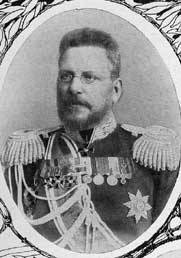
Commander 12 A. Infantry General A. E. Churin
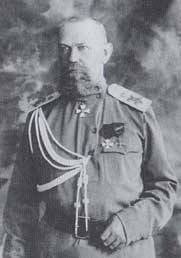
Commander 4 A, Infantry General A. E. Evert
While the armies that were on the flanks of the “Polish balcony” were holding back the enemy, the troops in central Poland 21 July left Warsaw and slowly retreated to the Sokolov – Siedlec – Lukow railway line. By the end of this month, the troops of the North-Western Front retreated to the Osovets – Drogichin – Vlodawa – Turiisk front, which decided the fate of Novogeorgiyevsk fortress.
The enemy’s plan to arrange a strategic “cauldron” for Russian troops in Poland failed. A huge breach in the center of the Eastern Front could have disastrous operational and strategic consequences, leading to the early curtailment of Russia's participation in a world war. Russian army out of the "bag" Advanced Theater. The strategic rollback of the Russian troops was carried out according to the plan and was associated with the solution of the most important economic and strategic tasks, of which the main one was the withdrawal of troops and the evacuation of resources from the “Polish balcony”.
6 schema. “Polish balcony” against the background of the overall picture of the Eastern Front by the end of June 1915 in Reichsarchiv. Der Weltkrieg 1914 – 1918. B. 8. Berlin, 1932
7 schema. The combat disposition of the Russian southern army group of the NWF and its opponent on the southern face of the "Polish balcony" to the beginning of the Lublin-Kholm operation. Reichsarchiv. Der Weltkrieg 1914 – 1918. B. 8. Berlin, 1932
But the loss of the Polish theater of war had an extremely negative impact on the situation on the entire Austro-German front: the connectivity of the Eastern front was broken and the maneuvering ability of the Russian army was largely undermined, largely based on the Polish railway network.
8 schema. Eastern Front in the summer of 1915 Korolkov G.K. Unfulfilled Cannes. M., 1926
9 schema. Warsaw front to 15 July 1915. Washburn S. Victory in Defeat. London, 1916
Notes.
12. Second Prasnyshskaya operation 07. 02. - 17. 03. 1915 was a defensive offensive operation 1 (gen. From cavalry. AI Litvinov; 10 infantry., 6,5 caval. Div .; 100000 bayonets, over 500 op.) And 12 (gen. From Kaval PA Pleve; 13,5 infantry., 2,5 cavalry. Div., 150000 bayonets, before 700 or.) The NWF armies against the 12 and 8 armies of the German Eastern Front (army group general. Artillery M.-K .-V. Von Galvitsa - 12 infantry and 2 cavalier divas; to 140000 bayonets, to 1000 op.). See: Reichsarchiv. Der Weltkrieg 1914 – 1918. B. 7; Holmsen, I. A. Decree. cit .; The composition of the German mobilized field corps, cavalry divisions and reserve corps (as reported by March 1 1915 of the year); Borisov A.D. Prasnyshskaya operation.
13. Reichsarchiv. Der Weltkrieg 1914 – 1918. B. 7. S. 257.
14. The third Prasnysh operation is a defensive operation 1-th (gen. From cavalry. AI Litvinov) (with the support of the corps 12-th A) of the NWF army against army group gen. artillery. M.-K.-V. Von Galvitsa (12 A) of the German Eastern Front 30. 06. - 05. 07. 1915 d. The ratio of forces - 177000 Germans (14 Pekh. Div.) Vs. 107000 Russians (8 Pekh. Div.) And 1256 Germanic guns against 377 Russians. During the battle, M.-K.-V. Von Galvitz received another 4 division from the 9 Army, and the number of his guns increased to 1382. See: Reichsarchiv. Der Weltkrieg 1914 – 1918. B. 8. Berlin, 1932; Korolkov G. K. The Prasnysh Battle.
15. Korolkov GK Decree. cit. C. 138.
16. Operation 3 Army (gen. From infant. L.V. (P.) Lesh; 16 infantry., 2 cavalry division; to 200000 bayonets, to 800 op.) NWF and army groups (11-I German and 4 th Austro-Hungarian Army) gen.-feldm. A. von Mackensen (28 infantry., 1,5 caval. Div., Over 300000 bayonets, over 2000 op.) 4-9 in July 1915, which was deployed in the Lublin strategic direction. See: Österreich-Ungarns Letzter Krieg 1914 -1918. B. II. Wien, 1931; Reichsarchiv. Der Weltkrieg 1914 – 1918. B. 8; The composition of the German army according to the 1 in May 1915 Warsaw, 1915; Strategic sketch of the 1914-1918 war. H. 4; Korolkov G. K. Unfulfilled Cannes.
17. The operation between the 13 th Army of the North-Western Front (general. From infant. V.N. Gorbatovsky; 13 infantry and 5 caval. Div. To 150000 people over 600 op.) And the German Bug (general infantry A. von Linzingen; 8 infantry and 1 cavalry divisions; about 100000 people, more than 600 op.) And Austro-Hungarian 1 (feldtseyhmeyster P. Puchallo von Brlog; 6 infantry., 2 caval.; More than 70000 people, more than 400, infantry., 2 caval., More than 8 people, more than 1915, infantry, 2157 caval., More than 1 people, over 116, infantry. ) armies unfolding 2 – 33 July 1915, in the area of Hrubieszow. See: RGVIA. F. 1932. Op. 8. D. 9; Op. 1918. D. 1914; Fighting on the Western Bug in the summer of 1918 of the year. Processed according to official data of the German General Staff; Fights of the Bugsky army. Excerpts // Herald of Volyn. Belgrade. 1914. No. 1918-8; Der Grosse Krieg. Die Kampfe der Bugarmee. Oldenburg, 4; Österreich-Ungarns Letzter Krieg XNUMX -XNUMX. B. II; Reichsarchiv. Der Weltkrieg XNUMX – XNUMX. B. XNUMX. Strategic essay. H. XNUMX; Korolkov G. K. Unfulfilled Cannes.
18. Österreich-Ungarns Letzter Krieg 1914 -1918. B. II. S. 624.
19. Yu. N. Danilov. Russia in World War 1914 - 1915 Berlin, 1924. C. 360.
20. 10 operation. - 20. 07. 1915 between 1 (gen. From Kaval. AI Litvinov; 14,5 peh., 3 Kaval. Div., 150000 man, over 700 op.) And 12 (gen. From infant. A. E Churin; 8 infantry div., 1 cavalry brig; about 100000 people, to 400 op.) Army of the NWF and German 8 army (gen. Artil. F. von Scholz; 5 infantry div. Kaval Brig .; 60000 man, around 400 op.) and army group gen. artillery. M.-K.-V. von Galvitsa (15,5 infantry div., cavalry. brig; 180000 man, before 1100 op. See: RGVIA. F. 2220. Op. 1. D. 159, 160; F. 5265. Op. 1. D. 4, 5; Österreich-Ungarns Letzter Krieg 1914-1918. B. II; Reichsarchiv. Der Weltkrieg 1914 – 1918. V. 8; Strategic Essay. 4; Korolkov G. K. Unfulfilled Cannes.
21. Operation 3 (gen. from infant. L.V. (P.) Lesh; 14,5 peh., 1,5 cav., Div .; 200000 man, to 700 or.), 4 (gen. From infant. A. E. Evert; 8 peh., 2 caval. Div., To 100000 people, up to 350 op.) And 13-th (gen. From infante. VN Gorbatovsky; 14 peh., 3 cav. Div; to 200000 man, up to 700 op.) NWF armies against German 11 (gen.-feldm. A. von Mackensen), Bug (gen. Infantry A. von Linsingen), Austro-Hungarian 1 (feldzhehmeister P. Puhallo von Brlog) and 4 th (Gen. infantry, Archduke Joseph Ferdinand) armies (total 35 infantry, 2 caval. Div., Over 500000 bayonets, over 2500 op.) With the support of yoy group gen.-regiment. R. von Voirsha (5 Pekh., 1 caval. Div; to 60000 bayonets, over 350 op.) 9 – 22 July 1915. See: RGVIA. F. 2157. Op. 1. D. 116; Op. 2. D. 33; F. 2279. Op. 1. D. 222; F. 3352. Op. 1. D. 56; Fighting on the Western Bug in the summer of 1915; Fights of the Bugsky army. Excerpts // Herald of Volyn. Belgrade. 1932. No. 8-9; Der Grosse Krieg; Österreich-Ungarns Letzter Krieg 1914-1918. B. II; Reichsarchiv. Der Weltkrieg 1914 – 1918. B. 8; Strategic essay. H. 4; Korolkov G.K. Unfulfilled Cannes.
122-mm howitzer in combat. Gaso
To be continued
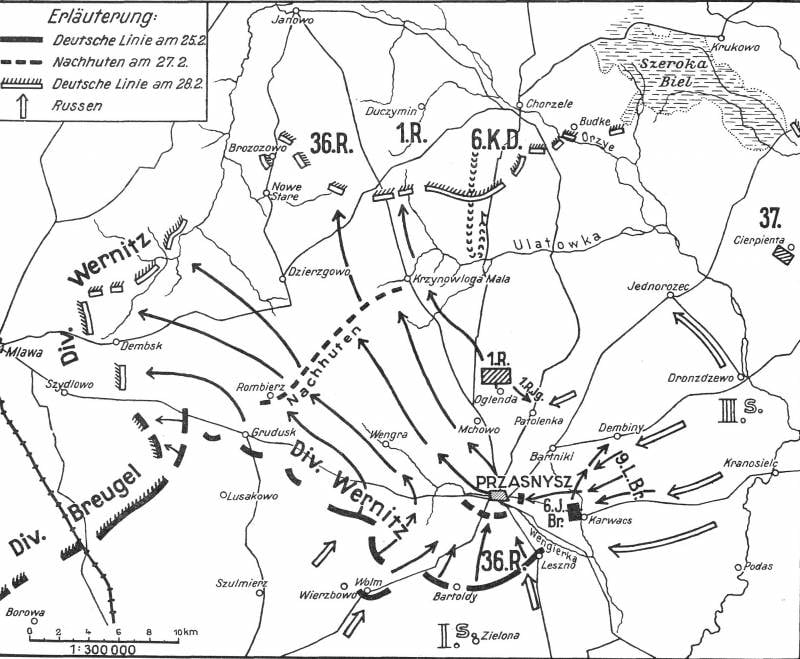
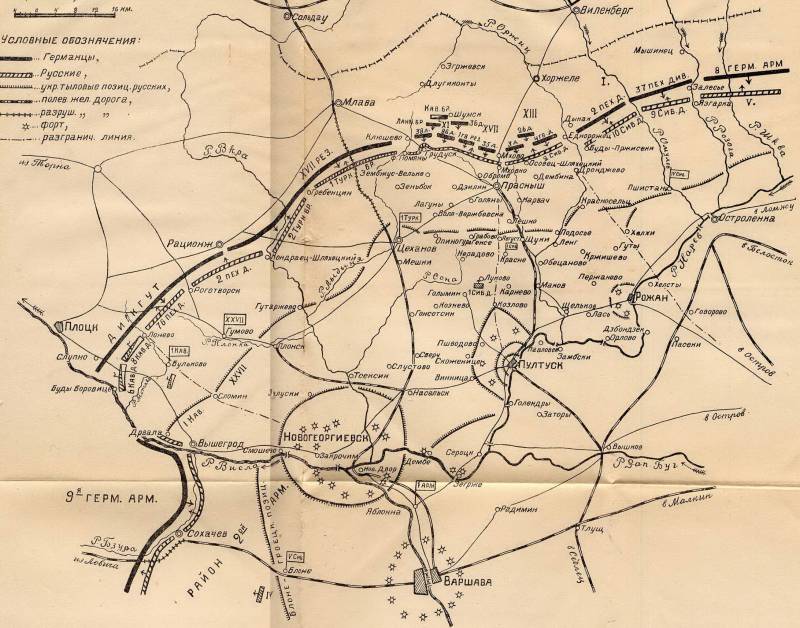
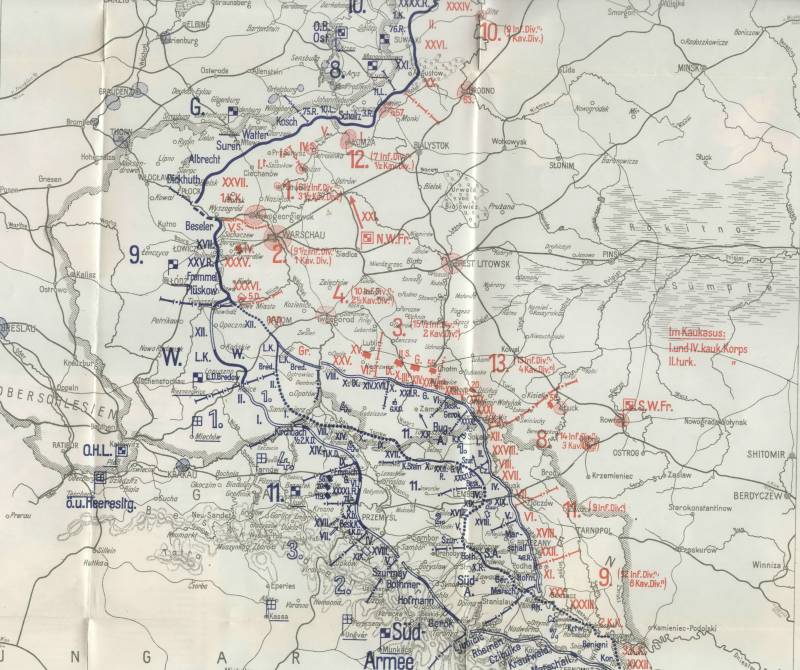
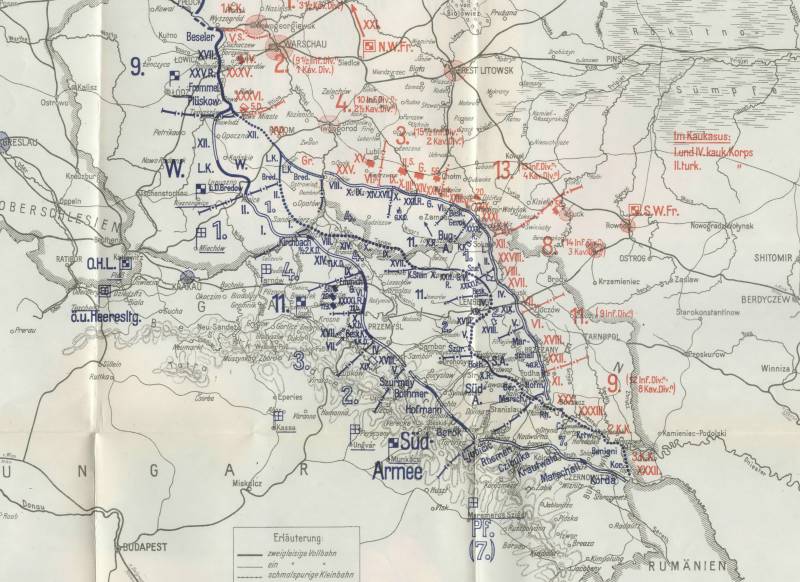
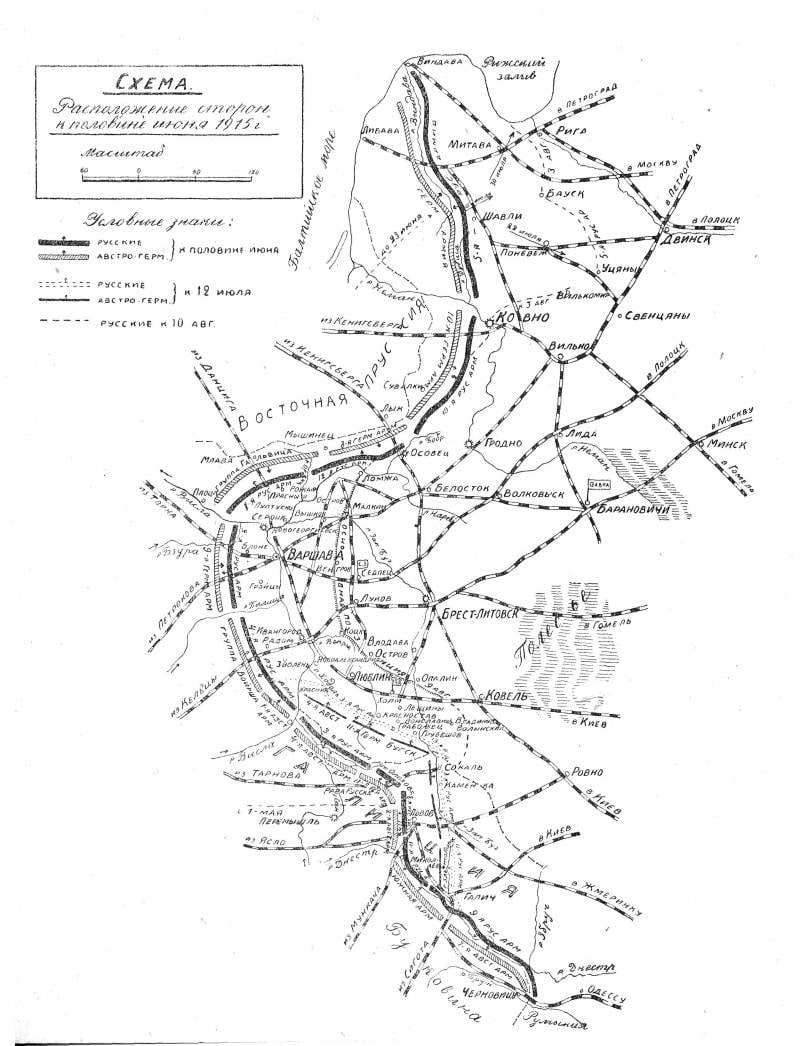
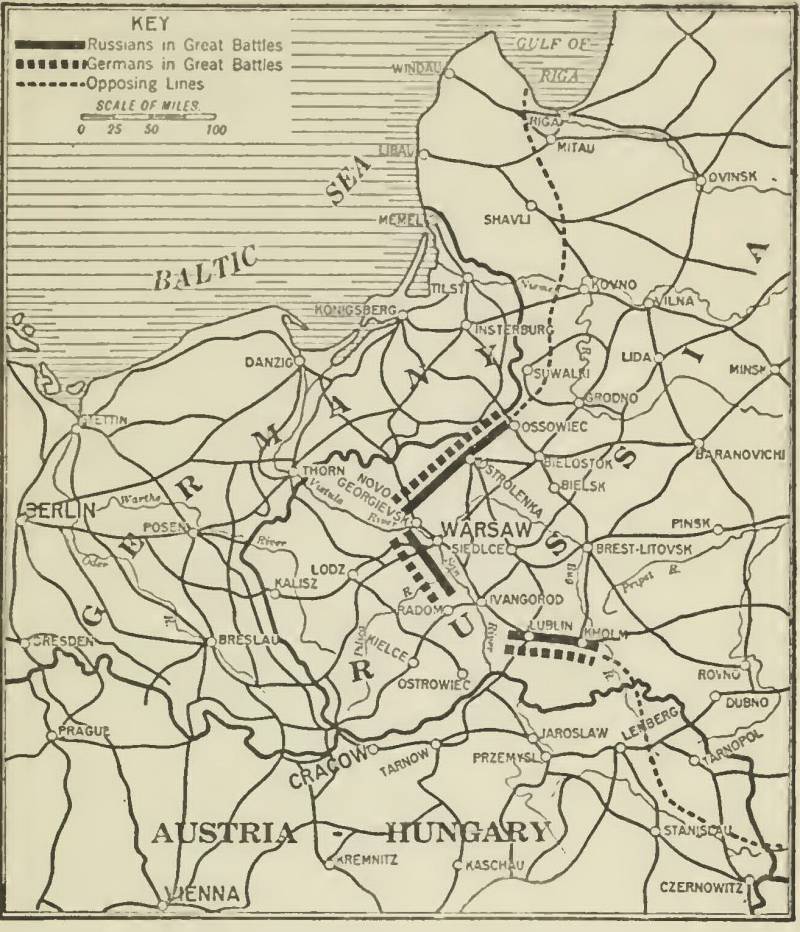
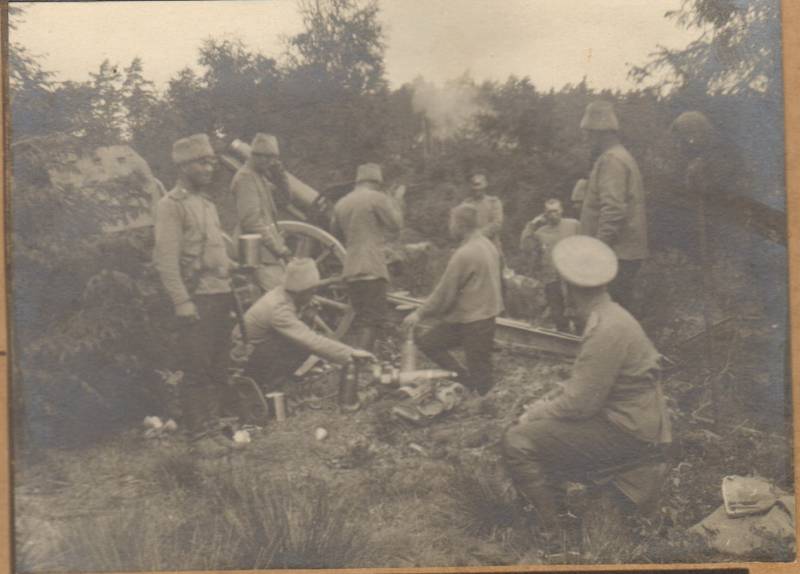
Information